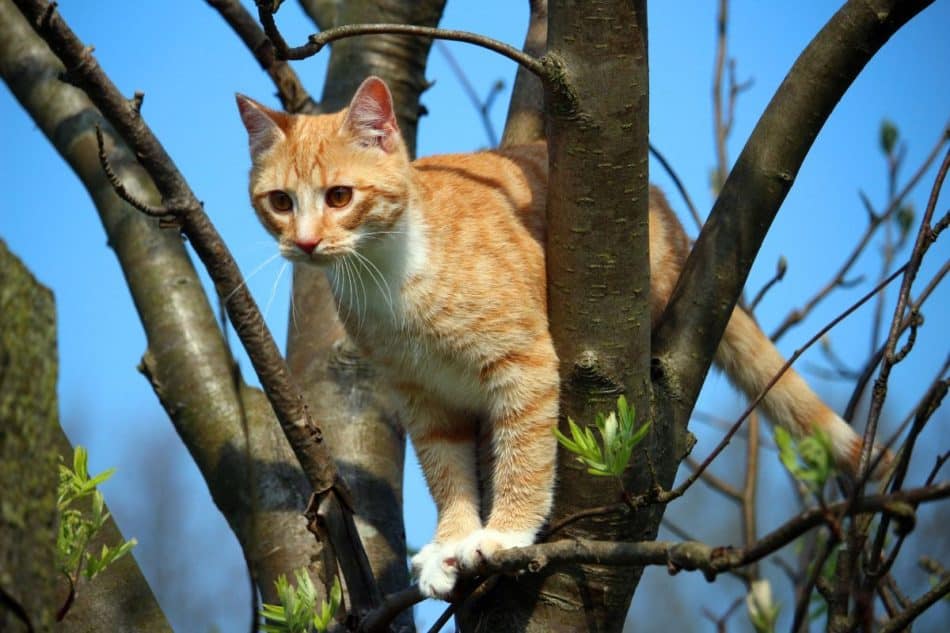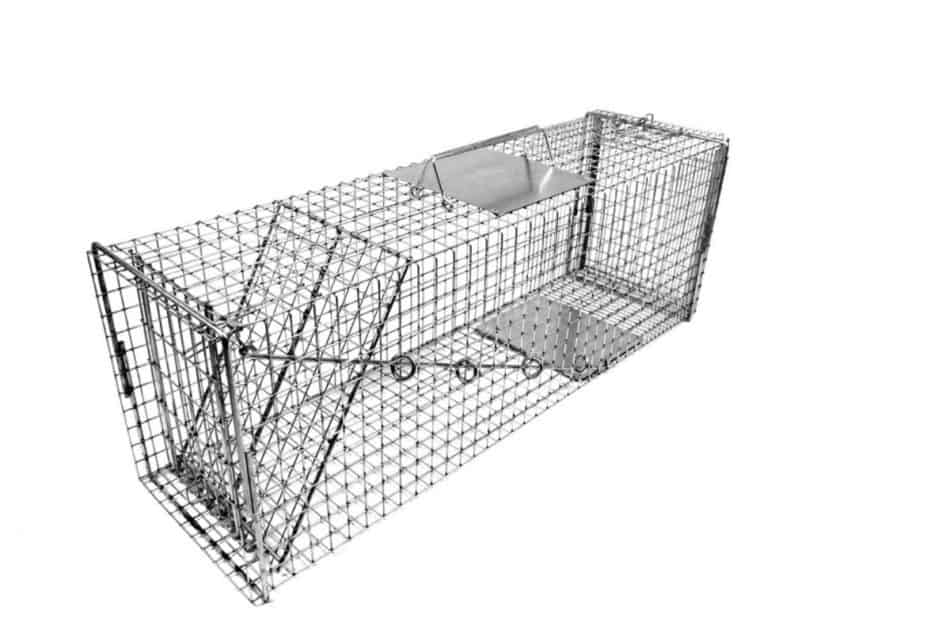Table of Contents
When Your Indoor Cat Bolts Out the Door
In years past we had twelve rescue cats. Some were outdoor kitties, some indoor / outdoor, and some were indoor only.
When our next generation of eight rescue cats came along, we decided they would all be indoor only.
Sometimes, when we were going out the front door, a cat might decide to bolt out the door with us.
We don’t know if they were curious about what was out there, or felt the call of the wild, or just wanted to go wherever we were going. Keeping an indoor cat from getting out can on occasion be a challenge.
So what do we do if one of them actually does get out?
9 Steps to Follow if Your Indoor Cat Gets Out of the House:
1. Hold the Door Open and Call to Your Cat
If you have other pets in the house who could get out, do not hold the door open but just stand outside next to the door while you call..
A kitty who is not used to the outdoors may become frightened or confused, so you should be confident and composed. Use a voice that transmits love not panic, and call your cat by name.
2. Invite Your Cat Home With Food
If you have packaged treats or packaged dry food on hand, stand just inside the open door and shake the package while calling your kitty by name. This has worked for me.
If you cannot leave the door open, stand just outside the door.
If you do not have a dry food package, loudly pop open a can of wet food. Perhaps your cat will hear the can being opened and smell it, getting the message to come home to dinner.
Always keep food in mind as something to help you find your kitty.
Note: Do not leave unattended food outside, as this may attract any number of visitors that could scare off your cat by their presence and by the scents they leave behind.

3. Go Searching
If it is dark, you will need a flashlight.
Walk around the house with your food temptation and call your kitty.
Then expand your search beyond your own property.
We had to do this on several occasions over the years.
Repeat this step as often as you can. Include dawn and dusk in your search times as that is when cats are most likely to be roaming around.
Note: A frightened kitty may find a hiding place, so be sure to look up and down.


4. Offer Your Cat Something Familiar
If your kitty has a favorite blanket or pillow, place it just outside your doorway.
If your cat is nearby he or she may catch the scent and take comfort in something that is known to them.
5. Keep a Lookout
If your door includes a screen door or storm door, leave your solid door open, weather permitting.
If your cat returns, he or she can see inside your house, and you might notice your pet’s return.
We had a glass storm door, and at least once we happened to be walking by and there stood our kitty looking in and wanting to be back home.
If you do have a screen door, you may be interested in the screening material information that you will find by going to my blog post Will My Cat Like a Screened Porch?
6. Post “Lost Cat” Notices
Make up a flier about your missing cat. Include a photograph or a description, and your phone number.
Be sure to use large letters so the flier can be read from a car.
We once had to put up “found cat” fliers and we thought one of our best spots was on a post on the street going out of the subdivision that the whole neighborhood had to use.
Post the fliers wherever you can find a post. Also go door to door and leave one for your neighbors.
7. Notify “the Authorities”
Tell your local animal control and animal shelter folks about your missing pet. If your cat has a microchip, let them know that.
The microchip company should have a registry that you can notify online or by phone. If you do not know the microchip company name, ask the veterinarian or shelter personnel who installed the microchip.
8. Try a Video Camera
You may well find where your cat is by putting out a motion-detecting, day and night vision video camera. This type of camera is commonly referred to as a trail camera.

- Bushnell trail camera
- For more info visit the Bushnell company website
You can strap this type of camera to a tree or a post or whatever. When an animal walks by the camera will make a time-stamped video which you can retrieve later. This will let you know if your cat is in the area and where you should concentrate your search.
I have used trail cameras to keep track of kitties and other animals such as racoons and opossums.
9. Consider Putting Out a Trap
This might be particularly effective if you have your kitty on video frequenting a specific area and/or you have located your cat but your pet is frightened and runs from you.
My own personal opinion is that you should not consider a “drop trap” where the entire cage drops over the animal when the trap is triggered.
Instead look for a trap with a trap door that drops down when the animal steps on a trip pan while trying to get to some food left in the back of the trap.
Here is a photo of such a trap offered by the Tomahawk Live Trap company.

I also think you should use a trap that is at least 36″ long so the cat will be well inside the trap when the kitty steps on the trip pan and the trap door drops down. You don’t want the falling trap door to hit your cat. You will need to put a bowl of food in the rear of the trap just beyond the trip pan.
You can purchase a trap, or you may be able to rent or borrow a trap from your local animal shelter.
I encourage you to get as much information and help that you can find about this procedure to make it as safe as possible for your kitty.
Keep in mind you may trap an animal other than your cat.
The trap must not be left unattended for a long period of time. A trapped animal could be exposed to hunger, cold, heat, rain, snow, anxiety, or threats from other animals.
I have used these traps and never had a problem. However, I would consider a trap to be a last resort, and it’s up to you whether or not you want to try it.
Don’t Give Up
It once took us about two weeks to entice a fugitive kitty back home. Keep Trying.
For more information, visit my blog post Should My Indoor Cat Go Outside?
What If My Indoor Cat is Missing in the House?
This is something I have seen happen many times. Each time, one of three things took place:
- We attracted the kitty by rattling a bag of treats
- We found our cat by looking all over the house.
- The kitty just showed up when he or she felt like it
Think about the last time you saw your cat, and then think about whether an outside door had been opened by anyone since then.
If you feel satisfied your cat did not get out, then you should concentrate your search in the house. Finding your kitty would be a good thing, as your pet could possibly be sick or injured.
However, if your kitty is fit and able-bodied, chances are he or she is just taking a break. Your search may not be successful, in which case your pet will hopefully just come out of hiding when ready to do so.
Additional Resources
My blog post Living With Your Cat has lots of good things to know if you are sharing your life with a cat.
